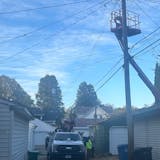Few people understand the costs and complexities of cancer better than Helen Parsons, a cancer survivorship researcher at the University of Minnesota. Yet she felt overwhelmed recently when seeking a walker for her father, who lost mobility after suffering brain cancer.
Parsons encountered confounding forms, followed by requests to send them by fax, followed by requests to resend them when they got misplaced or weren’t filled out properly. She eventually discovered it might take months to approve the walker her father needed immediately.
“It was just really frustrating, because I’m a health policy expert. I feel like I should be able to navigate this,” she said. “That was just not the case.”
Parsons is part of a U research group that is studying the “toxic” financial costs and administrative hassles for cancer survivors, especially when it comes to medical equipment such as walkers and oxygen tanks that are poorly covered by insurance but increasingly needed for an aging population.
Their first discovery was published late last month in JAMA Open Network, an online scientific journal, when they showed that survivors are paying 40% of the costs of cancer-related medical supplies out of their own pockets. In comparison, insurance coverage was much better for prescriptions drugs and hospital stays.
Patients were only spending a couple hundred dollars per year on average on medical equipment necessitated by their cancers, but that need will increase as the population ages, said Arjun Gupta, a U researcher who led the study. Insurance also creates more barriers before it will pay for equipment such as walkers, so he said he suspects that many people just give in and live with physical limitations.
“It’s easier for me to prescribe a $100,000 immunotherapy drug than it is to get a cane or a wheelchair,” he said.
Some barriers have emerged as public and private payers have tried to reduce fraudulent requests or overpayments for medical equipment. But they often delay approval of legitimate requests for equipment that patients urgently need.

